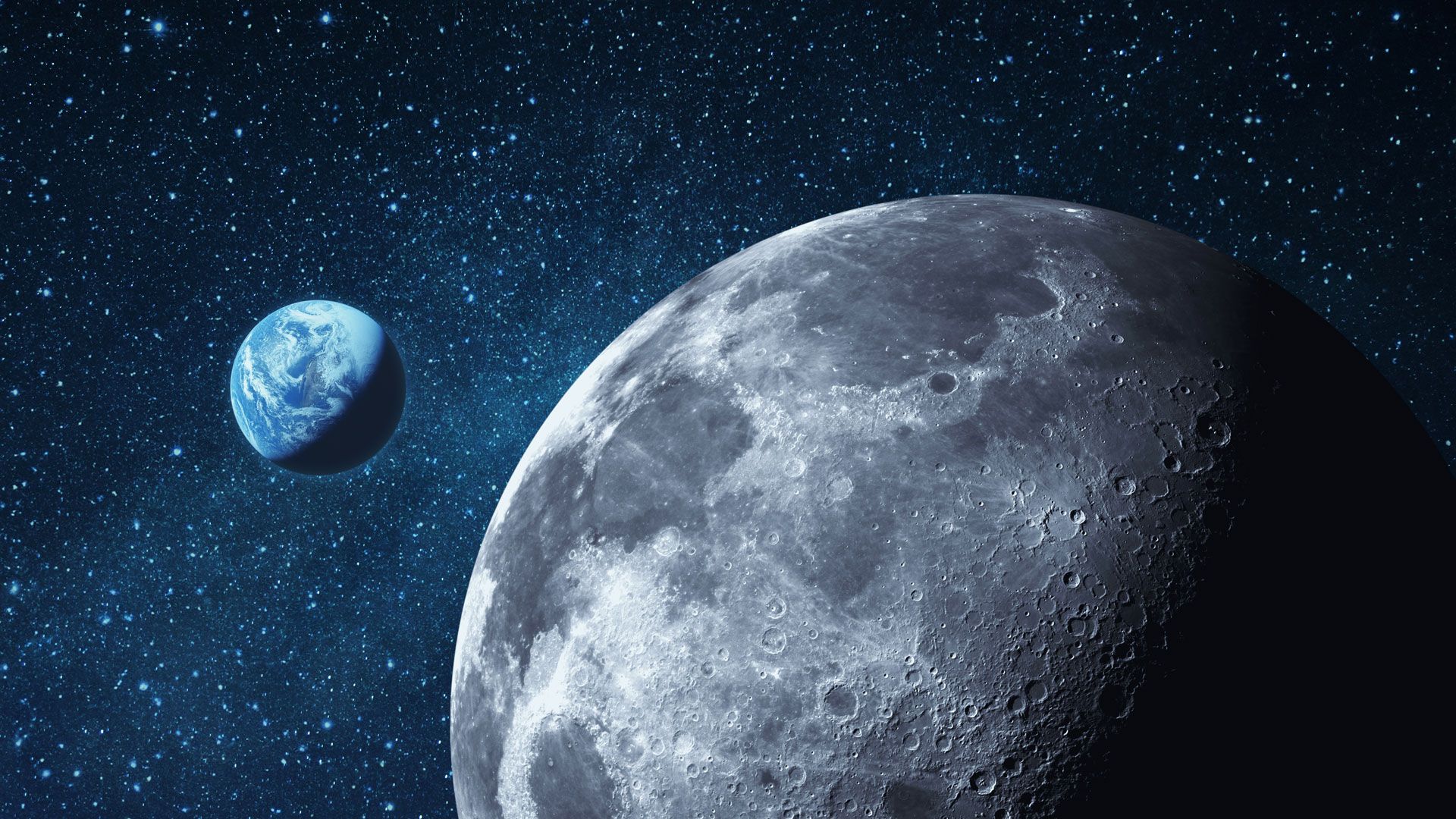
Lunar exploration poised to intensify
Five and a half decades after the historic Apollo 11 landing, ITU continues securing radio spectrum for future Moon missions.
Humanity has been collecting data on the Moon for more than 65 years. A decade before the famed landing by US astronauts in July 1969, unmanned probes from the former Soviet Union and the United States started assessing the Moon’s atmospheric and surface conditions.
Although manned missions stopped in 1972, exploration and research continued. To date, just three other countries have ever landed spacecraft intact on the Moon: China, India and, most recently, Japan.
In the last two months, China became the first-ever nation to land a probe on the Moon’s far side, which always faces away from Earth, and brought the Chang’e-6 craft back with rock and soil samples.
New landings continue building our knowledge of the Moon’s geological composition and potential resources.
Collectively, says Alexandre Vallet, Chief of ITU Space Services Department, “these missions pave the way for deeper research and the eventual establishment of lunar bases, which could then serve as stepping stones for human missions to Mars and beyond.”
Facilitating lunar communications
Any mission to the Moon requires complex communications systems to transmit data between the spacecraft and Earth. Manned missions – as shown in the famous news footage of the Apollo 11 landing – also involve voice transmission.
The International Telecommunication Union (ITU) became involved in satellite communications soon after the launch of Sputnik I, the first-ever artificial Earth satellite, in 1957. Its 1963 Extraordinary Administrative Radio Conference in Geneva, Switzerland, was organized to allocate exclusive or shared frequency bands to the various space services and to revise parts of the Radio Regulations concerning the assignment, use, notification and registration of frequencies, the identification of stations, and technical terms and definitions.
Since then, ITU has regulated and facilitated the coordination of radio frequencies for space services, including those used by lunar missions.
ITU’s recent World Radiocommunication Conference (WRC-23) placed lunar communications on the agenda of its next conference in 2027, laying the groundwork for future regulations relating to radio-spectrum use on and around the Moon.
The WRC-27 agenda item aims to establish a spectrum-management framework for communication on the lunar surface and between lunar orbit and the lunar surface, ensuring efficient and interference-free operations as missions and exploration intensify.
The rise of commercial missions
Until recently, lunar exploration was the exclusive domain of government-run space agencies. However, this is changing rapidly.
Commercially owned and operated landers and rovers are expected to arrive on the Moon in the coming years, backed by countries and companies convinced of the Moon’s long-term economic potential.
The quiet side
In terms of lunar radio spectrum management, a crucial “shielded zone” – the Moon’s far side – is already protected from radio interference, keeping this area viable for radio astronomy and other passive radio services.
The shielded zone of the Moon (SZM) or “lunar shielded zone” consists of an area of the lunar surface and an adjacent volume of space that are shielded from emissions originating from within 100,000 kilometres of Earth’s centre.
In effect, this zone on the quiet side of the Moon is naturally shielded from all the electromagnetic emissions from on or around Earth. This natural shielding, along with the absence of appreciable water vapour and oxygen in the lunar atmosphere, allows for radio-astronomical observations that are impossible on Earth.
This unique natural resource must be protected from radio emissions on the lunar surface and in lunar orbit.
The principle of protecting the zone from all radio emissions was adopted back in 1971, when ITU brought countries together for the World Administrative Radio Conference for Space Telecommunications.
Keeping humanity’s Moon usage sustainable
International Moon Day, celebrated annually on 20 July, commemorates the historic first human Moon landing by Apollo 11 astronauts Neil Armstrong and Buzz Aldrin in 1969.
The United Nations General Assembly established the day in 2021 to highlight the significance of lunar exploration and foster global awareness about the need to keep future exploration and utilization of the Moon sustainable.
ITU – as the world’s long-time radio regulator – together with UN partner agencies, remains committed to keeping space and lunar use sustainable.
“The increasing frequency, size and scope of lunar missions will place growing demands on the radio spectrum used on or near the Moon,” says Vallet. “Through future World Radiocommunication Conferences, ITU will continue to address the use of radio spectrum for lunar communications, ensuring that all users have fair access and that operations are efficient and interference-free.”
Header image credit: Adobe Stock
